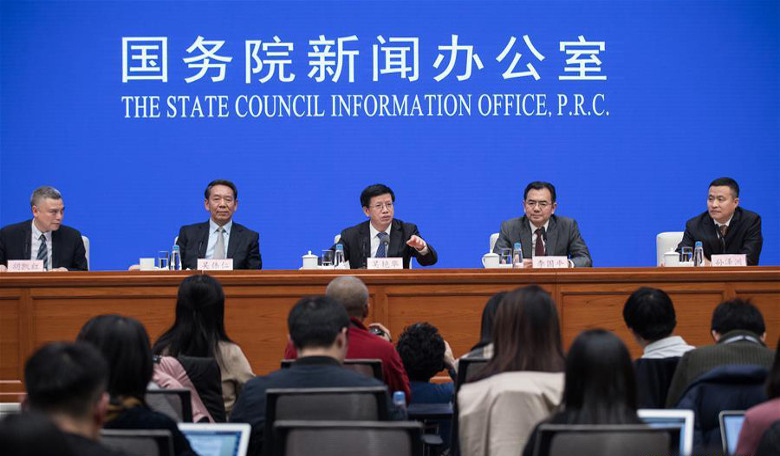China has announced at a press conference from the Chinese National Space Administration (CNSA) this week, what the country has planned for its future space-related projects. These include the launch of further Chang’e missions, one that could set the groundwork for a potential Moon base and a desire for more international cooperation on general space exploration as a whole.
Following the world's first-ever soft-landing on the far side of the moon this year, China's triumphant Chang’e 4 probe has helped kick start the fourth phase of China's lunar exploration program, starting with the launch of Chang’e 5 at the end of this year.
Chang’e 5 is a Moon-rock sample return mission whose goal is to land in the Mons Rumker region of Oceanus Procellarum, and return a 2 kilogram sample of lunar regolith, possibly from as deep as 2 metres. It is reported that the probe will carry on board, a Panoramic Camera (PCAM), Lunar Regolith Penetrating Radar (LRPR), and the Lunar Mineralogical Spectrometer (LMS).
If all goes according to plan, then more Chang’e missions are lined up for future launches. "Experts are still discussing and verifying the feasibility of subsequent projects, but it's confirmed that there will be another three missions after Chang'e-5," said Wu Yanhua, deputy head of the CNSA, at a press conference of the State Council Information Office.
Sticking with the same designation, Chang’e 6 and 7 will focus on the south pole of the Moon. According to Wu, Chang'e-6 will return samples from the Moon’s south pole, while Chang’e 7 will conduct comprehensive surveys around the region including the study of the south pole’s terrain, landform and its physical composition.
The Chang'e-8 mission on the other hand will test key technologies as groundwork for the potential construction of a science and research base on our nearest celestial neighbour.
Aside from the nation’s lunar missions, and a possible probe to Mars around 2020, China is also forging ahead with its orbital station – a project it hopes to have finished by the end of 2022, with the help of countries such as Russia, Germany and France.
International cooperation between the world’s leading space-nations was a central theme to the CNSA press conference, with Wu reiterating the importance of countries pushing forward the frontiers of space exploration together based on equality, peaceful use and mutual benefit to further humanity’s quest and journey into the Universe.
The country has already forged a number of strong space-collaborations with other nations, most notably with Russia and the US.
Speaking on their relationship with Russia, Li said that Russia is one of the key partners in China's space programs. The two countries he said held annual meetings devoted to cooperation in space exploration and that both were pushing ahead with joint aerospace projects “in accordance with China’s program for 2018-2022,” including Russia’s Luna-Resurs-1 (Luna-26) orbital spacecraft initiative.
Meanwhile, China and the US have recently worked together on Chang’e 4. NASA’s mission crew for the Lunar Reconnaissance Orbiter (LRO) assisted those working on Chang'e-4 to help pinpoint where the probe landed.
However, its not just the main players that are exclusively selected to join in. All foreign counterparts are welcome to participate in China’s future lunar and deep space missions, especially those pertaining to the Moon’s south pole, said Li.











